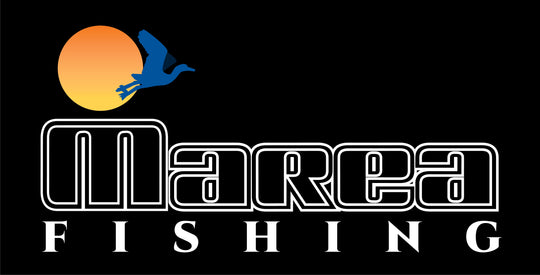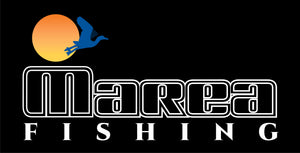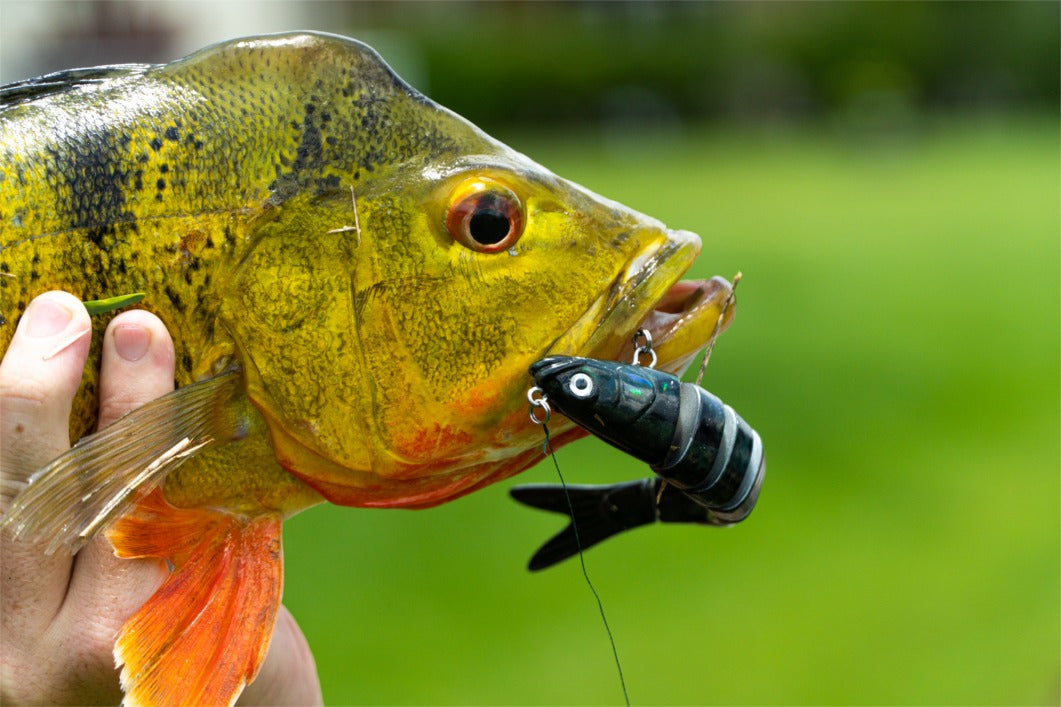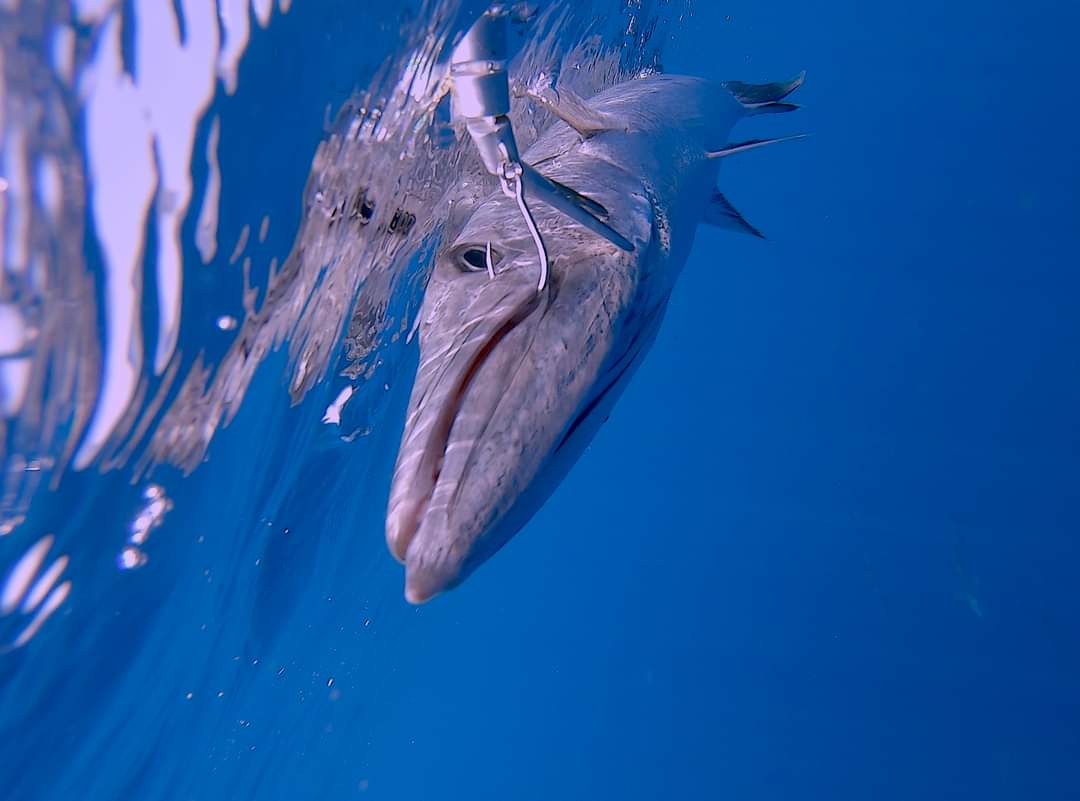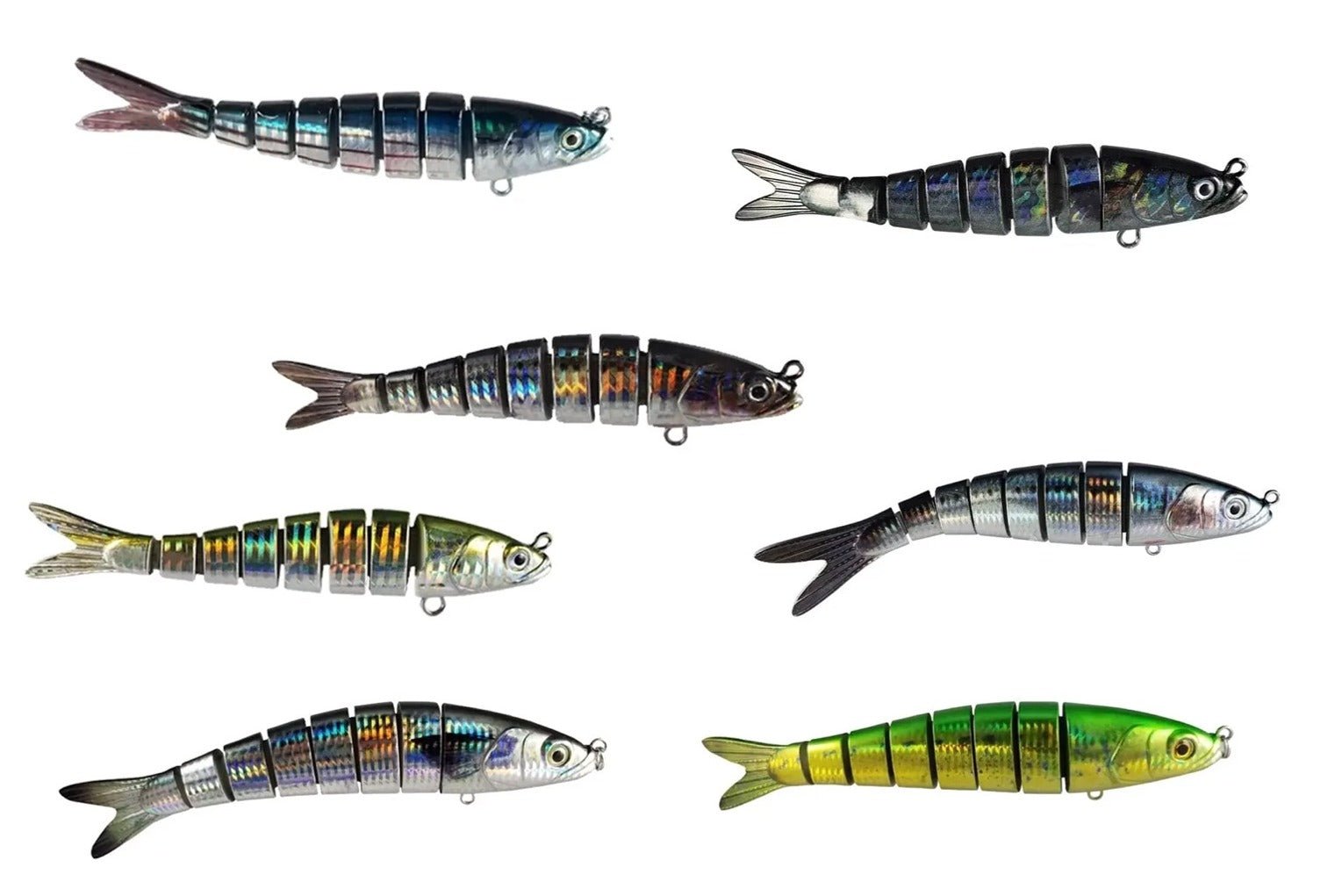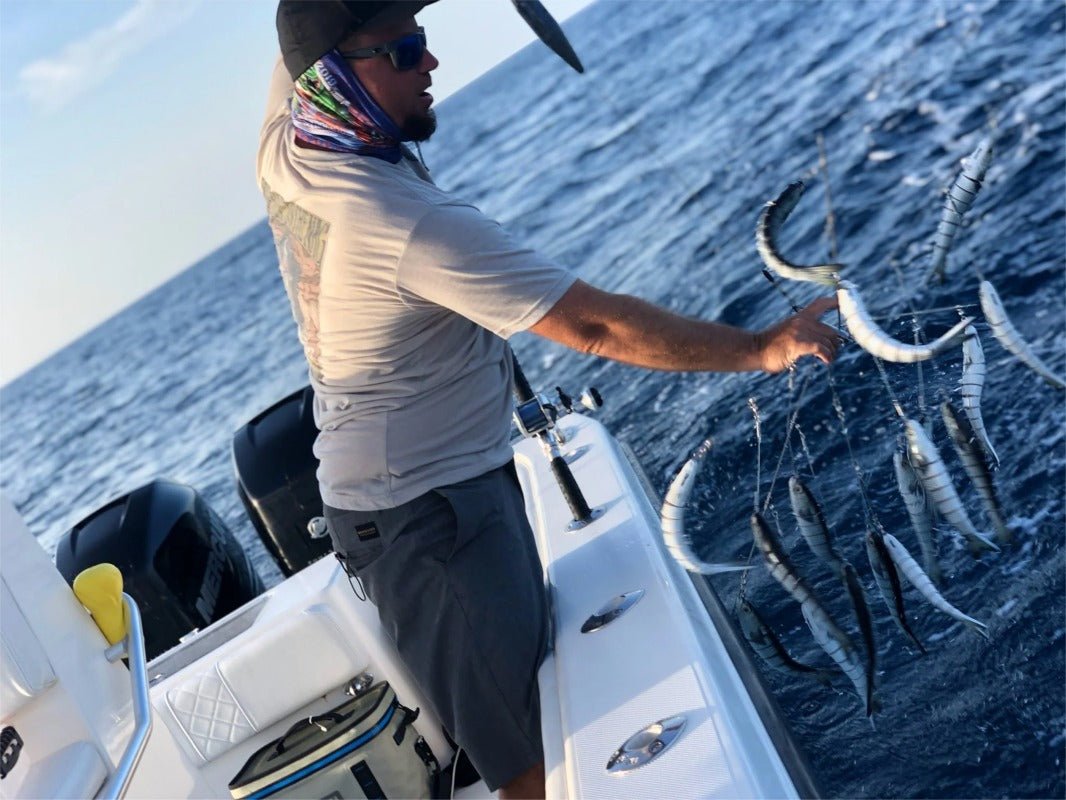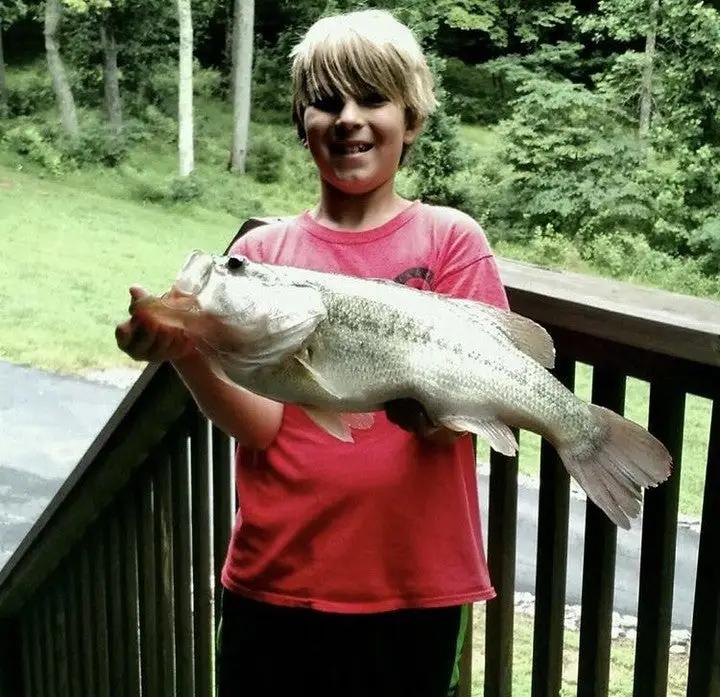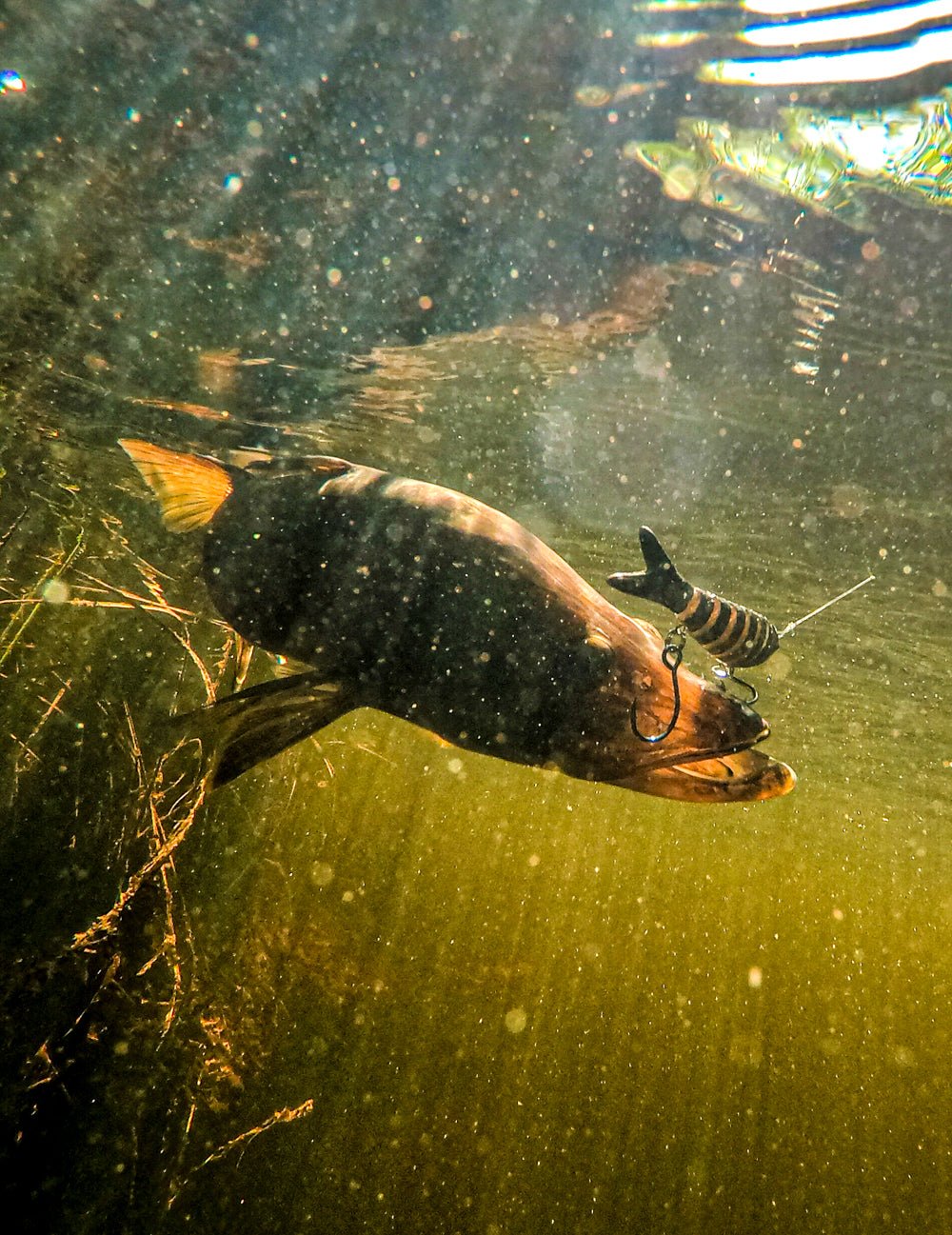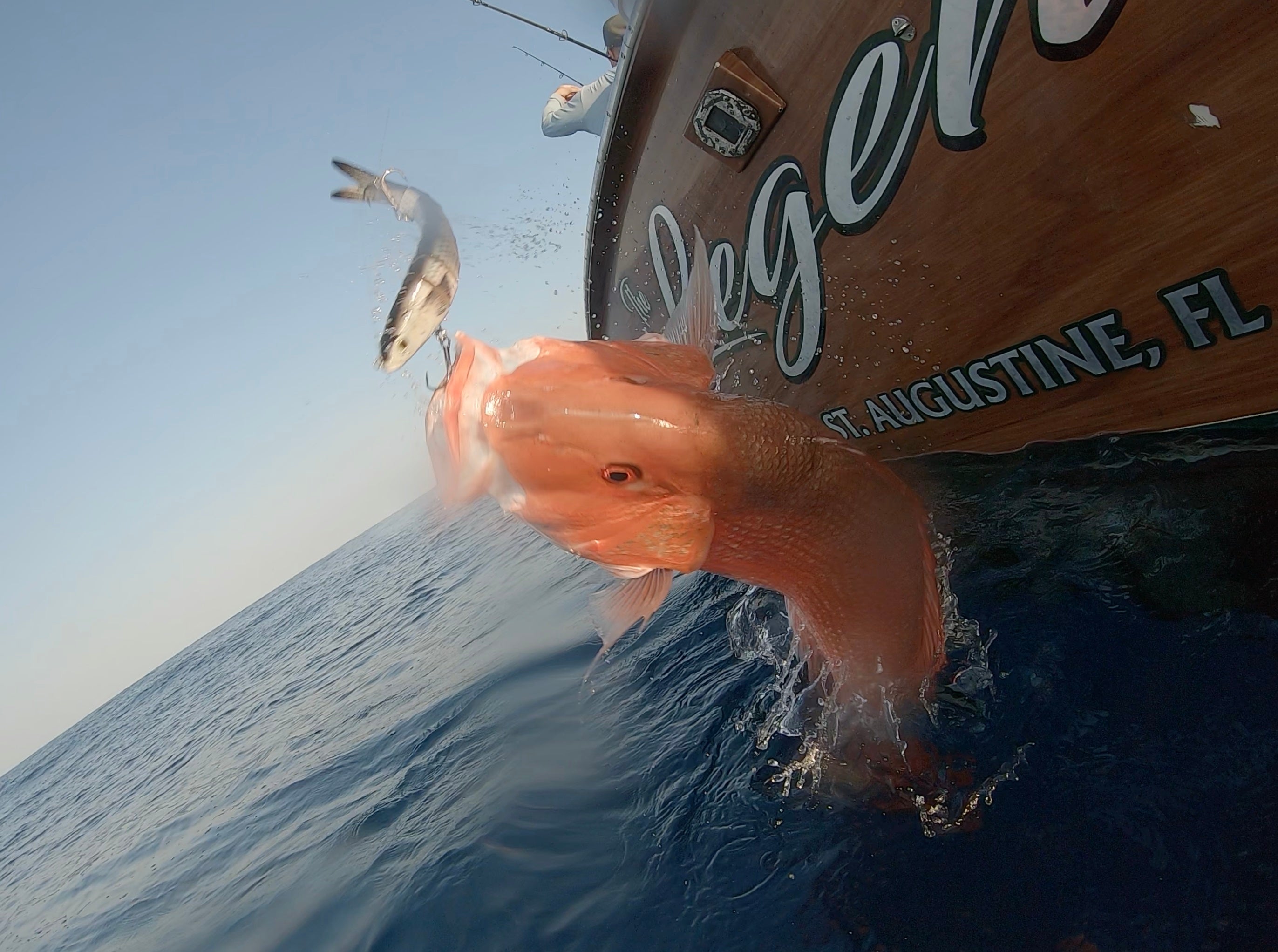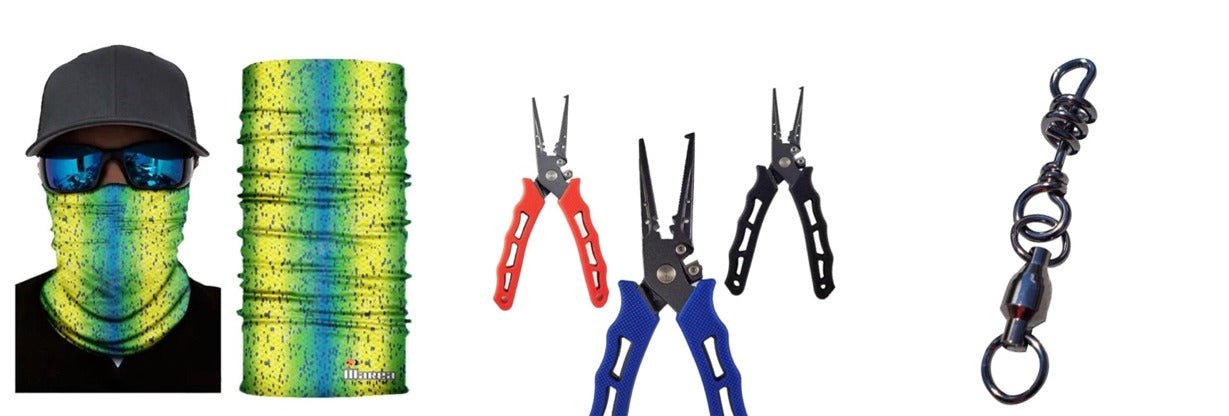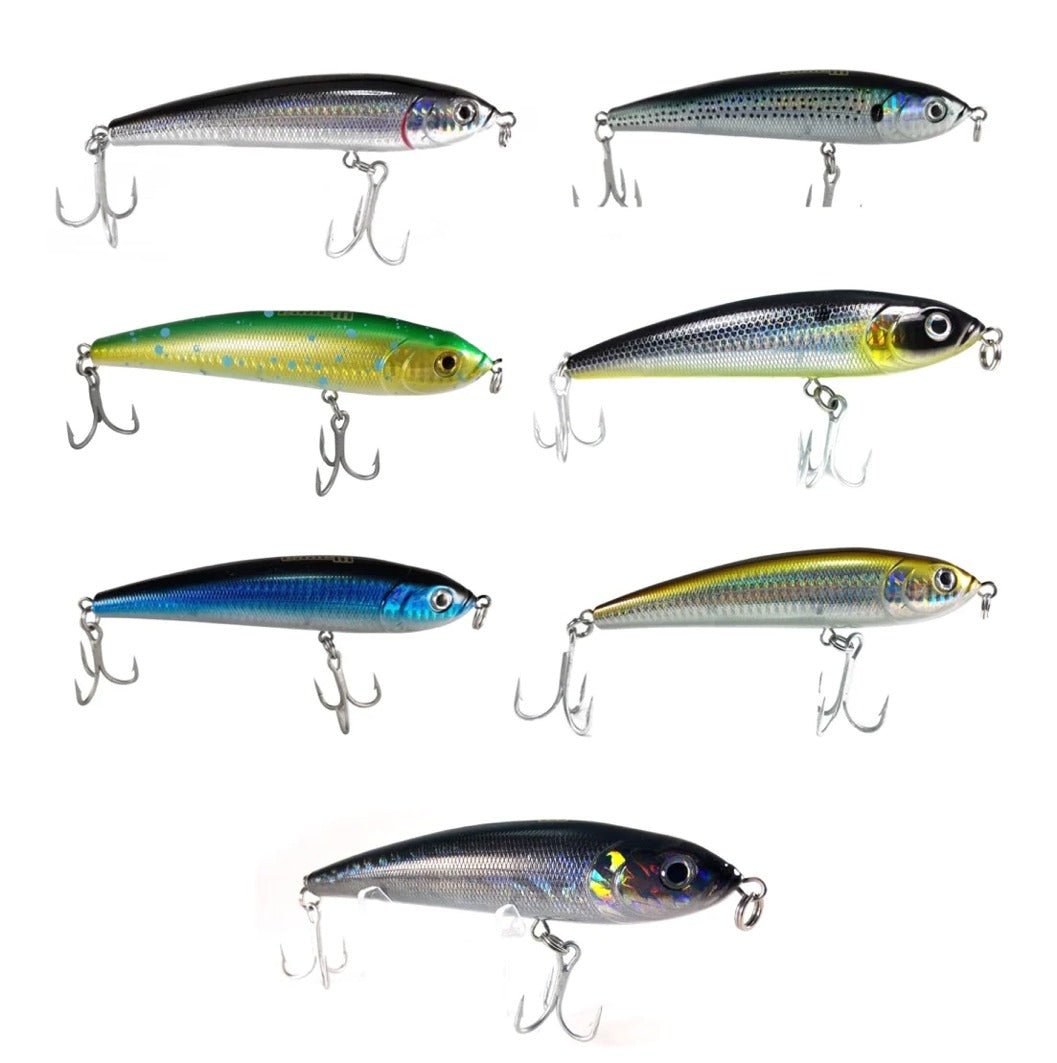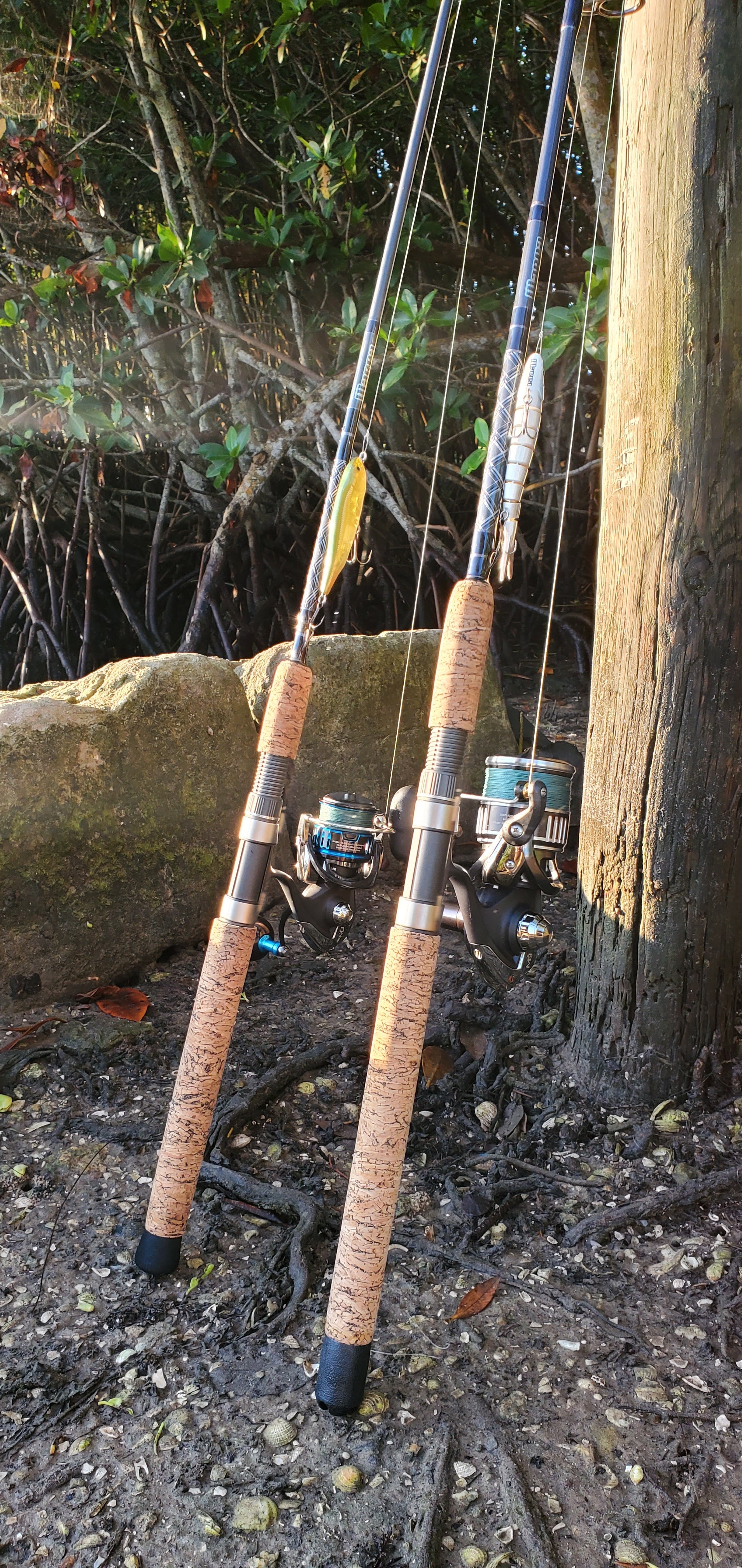Florida Peacock Bass with Sinking Lures
South Florida offers a unique fishing adventure with its thriving population of Peacock Bass. Introduced from the Amazon Basin, these colorful and aggressive fish have adapted well to the warm Floridian waters, particularly in the urban canals and lakes of Miami. Anglers seeking an exciting challenge will find that using sinking lures can be particularly effective for targeting Peacock Bass, especially during the hotter parts of the day when these fish retreat to deeper, cooler waters.

The exotic species is known for their aggressive behavior, lightning-fast attacks, and voracious appetites. Peacock bass are commonly targeted by anglers of all ages and have found in a home in a variety of South Florida waterways.
Peacock Bass History in South Florida
In the beautiful paradise we call home, South Florida is all about the butterfly peacock bass which is a widely popular freshwater gamefish first introduced to south Florida back in the early 80's. Frequently targeted by both land-based and boat anglers using a wide variety of offerings ranging from live bait to artificial lures & flies.
After careful documentation of these facts and review by Peacock Bass authorities nationwide, the Florida Fish and Wildlife Conservation Commission decided to move forward with the introduction. Butterfly peacock were then brought in from Peru, Brazil, and Guyana and bred at the FWC’s Non-Native species Research Lab. Using 3 stocks maximized genetic variability, and fish were stocked only after stringent testing by both the U.S. Fish & Wildlife Service and Auburn University to confirm they were healthy specimens and parasite free.
Today the peacock bass fishery encompasses more than 300 miles of urban waterways in Dade, Broward, and Palm Beach counties and is self-sustaining. Since future stockings are not needed, there is ZERO on-going cost for the program. Yet the Florida Peacock bass fishing program produces endless hours of angling enjoyment each year and generates nearly $8 million of annual revenue to the local economy.

Understanding Peacock Bass
Biology and Behavior
Peacock Bass (Cichla spp.) are actually a type of cichlid, not a true bass. Their aggressive nature, striking colors, and strong fight make them a popular target among sport fishers. Peacock Bass are sight feeders with excellent vision, which means clear waters can often lead to more successful catches. They are known for their territoriality, often attacking lures not just to feed, but also to defend their space.
Aggressive Peacocks prefer live bait such as juvenile bass-both the largemouth and peacock variety along with baby bream. Fish imitating lures are frequently used by largemouth bass fishermen, however peacocks will shy from feeding on any soft plastic worm frequently used to target largemouth bass. Butterfly Peacock bass are also much more temperamental and extremely irritable while protecting their offspring during bedding season. Exhibiting a thick caudal fin and oversized peck fins, peacock bass reach lighting fast speeds quickly with deadly precision when ambushing their prey. Retrieving a realistic swimbait at fast speeds can also score big with aggressive peacocks.
Habitats in South Florida
In South Florida, Peacock Bass predominantly inhabit freshwater systems like canals, rivers, and lakes. They prefer areas with abundant cover such as submerged trees, overhanging brush, and man-made structures like dock pilings and bridge supports. Understanding where these fish are likely to be based on the time of year and day is crucial for any angler.
Peacock Bass - Fish Biology
With a thick body profile like that of a largemouth bass, Peacock bass flaunt highly vibrant and variable colors. They are generally golden with three dark colored vertical bars that tend to fade. Larger specimens at times are absent from these markings. Most fish also have a black spot with a yellow-gold halo on the walloping caudal fin. This contrast in colors along a Peacock bass's profile, also known as countershading, helps the predator disorient its prey. This unique pattern also creates great ambush camouflage to quick inhale the next meal.
Peacock Bass Behavior
-
Spawning Cycle
The Butterfly Peacock bass usually spawns from April through September typically peaking in May & June with abnormally aggressive movements. They will then set up camp near a hard sand shoreline and build a bed. Here the females will lay as many as 10,000 eggs per episode, protecting their young with their lives. If anything, and I mean anything goes near the nest or bed, an attack is eminent. The males commonly develop a 'nucchal' hump on foreheads when reproductively active and use it to deter any intruders.
-
Feeding Habits
This exotic and non-native species feeds almost exclusively on fish. Peacock Bass are also equipped with a broad caudal fin built for great speed to capture prey. Typically feeding during daylight hours, this fish has helped reduce the number of undesirable exotic fishes, such as snakehead fry, juvenile pacu, and especially the spotted tilapia.
Lure Retrieval Techniques & Seasonal Tips
Techniques for Using Sinking Lures
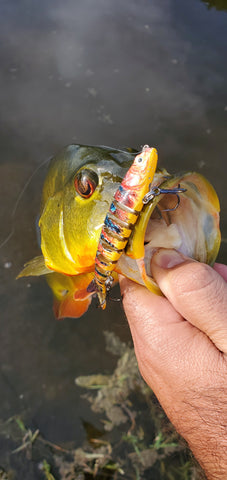
- Cast and Let Drop: Often, just the action of a sinking lure dropping past a Peacock Bass is enough to provoke a strike. Cast beyond the target area and allow the lure to sink, watching the line for any movement that indicates a bite.
- Slow Retrieve: After letting the lure sink, retrieve it slowly to keep it in the deeper zones longer. This method is particularly effective in hot weather when bass are deeper.
- Jigging: This involves lifting the rod tip sharply to make the lure 'jump' off the bottom, then letting it sink back. This action can trigger aggressive strikes from Peacock Bass watching from below.
Peacock bass are a structure-oriented fish, much like largemouth bass and look for ambush points to feed easily and efficiently. Sinking lures can be very effective when targeting them, as this enables the bait to get down into the optimal strike zone. When Peacocks Bass are bedding and in full spawn mode, their aggressive nature is heightened. Enticing them with a sinking twitch bait such the Motion Minnow by Marea Fishing or Rapala's CountDown series.
Both artificial lures have a very natural fall and drive fish crazy, especially during spawning periods. Simply locate the fish on the bed, cast well past bed holding the fish with your lure and within 3 ft of their nose, slow down the presentation and let the lure fall like a naturally injured baitfish.

Focus on using color patterns that match the forage available where you're fishing. Perch, Tilapia, or bream color schemes have always done well along with the oldie goldie motto. This simply means that orange or gold hues on the baitfish's side resemble a goldfish or perhaps even a baby peacock? Loyal peacock bass anglers are aware that they are cannibalistic and will favor colors schemes resembling a spring batch of baby peacocks.
Sinking Lures for Peacock Bass
Choosing the Right Lure
The key to successful Peacock Bass fishing with sinking lures is selecting the right type based on water conditions and fish behavior. Here are some effective sinking lures:
- Lipless Crankbaits: These versatile lures can be used to explore various depths by varying the retrieval speed. Their vibration and noise are particularly effective in attracting the attention of Peacock Bass.
- Jigs: Jigs can mimic a variety of prey, from small fish to crustaceans. They are ideal for targeting the rocky bottoms and structures where Peacock Bass often hide.
- Paddle Tail Soft Plastics: These lures have a realistic fish profile and the tail action adds a lifelike movement. They work well when rigged to sink and retrieved slowly near the bottom.
- Spoons: The fluttering action of a falling spoon mimics a wounded baitfish, an irresistible sight for a hungry Peacock Bass.
Best Practices & Pro Tips
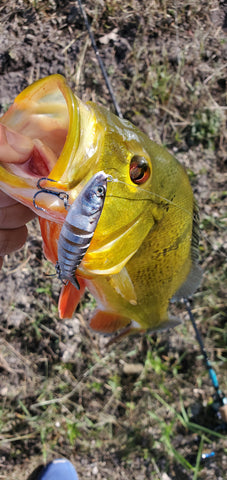
Understanding the Environment
- Water Clarity: In clear waters, choose lures that mimic the local baitfish in color and size. In murkier waters, opt for lures that create more vibration or noise to help Peacock Bass locate them.
Timing
- Seasonal Patterns: Peacock Bass are most active in warmer months. However, they can be found year-round in South Florida's mild climate.
- Time of Day: Early mornings and late afternoons are the best times to fish for Peacock Bass. They typically tend to feed less during the hottest part of the day, however that’s not to say that you won’t entice a trophy fish to commit if your presentation is on point!
Conclusion
Fishing for Peacock Bass in South Florida with sinking lures offers a rewarding experience for anglers looking for a challenge. Understanding the behavior of these fish, choosing the right lures, and applying effective techniques will significantly increase your chances of a successful catch. As with all types of fishing, patience and persistence are key. With the right approach, you can enjoy the thrill of catching one of the most sought-after freshwater fish in the region. The only thing missing here is for you to book your trip to South Florida with one of the many great full-time guides out there making a living at perfecting the craft of locating and landing these amazing fish.
